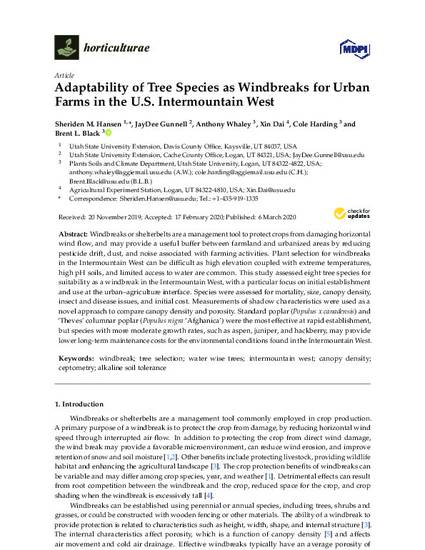
Windbreaks or shelterbelts are a management tool to protect crops from damaging horizontal wind flow, and may provide a useful buffer between farmland and urbanized areas by reducing pesticide drift, dust, and noise associated with farming activities. Plant selection for windbreaks in the Intermountain West can be difficult as high elevation coupled with extreme temperatures, high pH soils, and limited access to water are common. This study assessed eight tree species for suitability as a windbreak in the Intermountain West, with a particular focus on initial establishment and use at the urban–agriculture interface. Species were assessed for mortality, size, canopy density, insect and disease issues, and initial cost. Measurements of shadow characteristics were used as a novel approach to compare canopy density and porosity. Standard poplar (Populus x canadensis) and ‘Theves’ columnar poplar (Populus nigra ‘Afghanica’) were the most effective at rapid establishment, but species with more moderate growth rates, such as aspen, juniper, and hackberry, may provide lower long-term maintenance costs for the environmental conditions found in the Intermountain West.
